Selection Tips
In order for colored or plain wallpaper in the kitchen to serve for more than one year, while retaining its appearance, they should be chosen based on certain criteria:
- Moisture resistance. High humidity and water ingress on the walls in the kitchen are an integral part of everyday life, so give up paper wallpaper initially. You need moisture resistant, washable or super-washable.
- UV resistant. The most important indicator for rooms with southern windows. Under the influence of the sun, they can turn yellow, bright wallpaper for the kitchen will generally fade and lose their appearance.
- Water vapor permeability. Such decorative wallpaper for the kitchen is also called breathable. Thanks to the micropores, they allow air to pass through, eliminating the formation of fungus and mold on the wall.
- Easy cleaning. Not only clean water gets on the walls, but also fat, sauces, drinks. If a stain, for example from coffee, soaks into the surface, you will have to start a new repair. Therefore, choose a sink that is not afraid of water and cleaning agents, or a superwash - even a brush is not afraid of that.
- Color. Depends not only on your personal preference, but also on the size of the room. For small kitchen take a closer look at white wallpaper, black wallpaper is used in large rooms, or to decorate an accent wall.
- Picture. Wallpaper for the kitchen with patterns is also selected for the dimensions of the room: small and low-contrast for small ones, large and contrasting - on the contrary, for spacious ones.
What types are best for the kitchen?
Wall decoration requirements limit the choice of suitable materials. Wallpaper on a non-woven backing with a vinyl or non-woven surface is suitable. For paintable wallpaper, choose one that can withstand re-painting 2-5 times. This way you can easily and quickly renovate the walls in the kitchen.
Vinyl
They are on a paper and non-woven basis, the second option is still considered more practical. As for the decorative vinyl layer itself, there is a hard, flat (hot stamping) and foamed (textured surface). It is easier to clean and wash, of course, solid or flat. The textured coating is too soft and careless movement even with a soft cloth can deteriorate the pattern. Choose the smoothest, thickest vinyl wallpaper with a wave icon (ideally 3 waves) and brushes - this means that they can be cleaned and washed with detergents.
In the photo, black and white wallpaper with a large pattern
Non-woven
Non-woven material is a moisture-resistant, fire-resistant, breathable material. It does not have an unpleasant odor, is easily glued to the wall, hides minor surface defects, easily tolerates humidity, temperature changes, and ultraviolet rays.
Do not be afraid to purchase textured white wallpaper for painting, good paint will make them stronger and wiping with a damp cloth will not damage the surface. The relief, by the way, perfectly hides the disadvantages of poorly prepared walls, which is a great advantage.But dust accumulates in its folds, so you will have to add the item "Wash the walls" to the cleaning calendar.
Fully non-woven wallpaper is less resistant than vinyl wallpaper on a non-woven base - therefore, it is better to choose the option with a vinyl coating not for painting.
The photo shows a bright green interior
Glass fiber
This material is still a curiosity, because its price is slightly higher than even high-quality super-washable vinyl. However, the properties of the coating are also superior to all other types. Glass fiber:
- tolerate high humidity, UV rays, temperature drops;
- environmentally friendly, do not emit harmful substances;
- breathable (as opposed to vinyl);
- do not accumulate dust;
- hypoallergenic;
- fire resistant.
Fiberglass fabrics are produced for painting, either already painted, smooth, or with a small relief.
In the photo, the apron is finished with glass cloth
What types of wallpaper are best not to use in the kitchen?
We have already determined that the interior of the kitchen is picky about the choice of wall coverings. This will not work:
- paper (they are not washed, they are afraid of moisture);
- options with a soft embossed coating (it is easy to peel off or scratch during cleaning);
- models with a single wave icon (ideally - 1-3 waves + brush, permissible - 3 waves);
- not resistant to fading (choose with the sun, plus sign in the sun, two suns).
As for the placements in the interior of the kitchen, super-washable fire-resistant ones are suitable even for an apron, but they are not the best option for this area. If you still want to leave wallpaper between the cupboards of the kitchen unit, protect it with transparent skins.
The photo shows modern stylish dark walls with patterns
How to choose the color of the wallpaper?
The color of the wallpaper is as important as its characteristics. How the room will look after renovation depends on it.
White wallpapers are universal, they fit any style, make a small kitchen more. In addition, white is not as easily soiled as it might seem: dark shades are even less practical in this regard. The white kitchen looks fresh and encourages creativity in the decor.
A kitchen with dark wallpaper, for example black, should be spacious (16-20 sq. M and more). But even on a large area, you should not go into the dark range: if the walls are dark, leave the headset light, dilute the combination with bright colors.
Pictured is a bright kitchen with open shelves
As for the color options, pay attention to which side the windows face. Southern sunny openings require cold light wallpaper for the kitchen, which will refresh: gray, blue, light blue, green... The northern ones, on the contrary, crave warm shades: beige, brown, yellow, orange.
Choosing a suitable drawing and pattern
The colors of the wallpaper for the kitchen do not have to be monochromatic, the print will revive the walls, give dynamics. A selection of wallpaper with a pattern for the kitchen has certain rules:
- Proportionality. The smaller the room, the smaller the print. For example, in Khrushchev, the patterns should be tiny. And wallpaper for the living room kitchen, on the contrary, can depict large monograms.
- Contrast. Variegated patterns reduce space, so they are suitable for large areas. In small kitchens, give preference to dim patterns.
In the photo, a combination of 3 textures in wall decoration
As for the pattern itself, the design of the wallpaper for the kitchen dictates the chosen style:
- geometric stripes, checks, zig-zags are suitable for modern styles - scandi, high-tech, neoclassic;
- floral patterns (leaves, flowers) will fit into country, provence, eco;
- Monograms and a repeating pattern on a light background highlight the richness of the classic style.
The texture can also imitate stone, wood, brick and other textures - this technique looks good in a loft, eco, scandi.
Wallpaper or silk-screen printing with perspective will visually enlarge a small room, add a zest to the interior.
Pictured is a narrow two-row kitchen
What style features do you need to consider?
The walls are the largest surface of the room, so they set the style direction.In style, they differ in color, texture, print:
- Scandinavian. Light colors, monochrome drawings, cold shades.
- Classical. Symmetrical patterns, bright contrasts, warm colors. Supplemented with stucco molding.
- Provence. Small floral patterns, light pastel colors. Wall murals depicting lavender fields, French streets.
- Oriental. The usual light monochromatic, with red and black patterns (hieroglyphs, oriental motives).
- Loft. Plain colors with imitation of plaster, or concrete, wood, brick. Wall mural with a city landscape, steampunk ideas.
The modern design of wallpaper in the kitchen cannot be described with a couple of phrases: there are solid colors, floral and geometric prints.
In the photo there is a spacious room with a fireplace
How can you combine wallpaper in the kitchen?
In order not to oversaturate the kitchen with decor, use two types of wallpaper: plain and patterned. Manufacturers often create collections where you can choose companions that perfectly match each other. If you doubt that you can find suitable options yourself, combine the ones already invented at the factory.
An accent wall is made in the dining area, opposite the door, or on the side wall. It depends on the geometry of the room and the pattern of the canvases. For example, geometric stripes are glued to a narrow wall to expand the space. Positioned vertically - visually raise the ceiling. Bright accents are depicted in a narrow long kitchen on the far wall to bring it closer.
In the photo there is a decorative side on the wall
Combining wallpaper in the kitchen with other materials requires taking into account an important nuance: processing the joint. For example, special borders are sold for tiles, which help to correctly form the connection. If the joint runs along the corner, then no additional decorations are required.
Winning combinations:
- wooden lining;
- tile;
- porcelain stoneware;
- brick;
- paint;
- decorative plaster.
In the photo, the design of the walls with clapboard
How do they look in the interior of the kitchen-living room?
The combined kitchen does not require washable wallpaper throughout its entire area, but not everyone succeeds in combining different types of coatings beautifully. Therefore, if you are going to decorate the walls with one type of wallpaper, choose those that are suitable for kitchen needs.
The kitchen-living room requires zoning, which wallpaper can help. Idea: wallpapers for the kitchen and the hall are chosen from the same collection, but in different colors. Or they are painted with different shades of paint to separate the halves of the apartment from each other.
However, in a small room, it is better not to divide the space - cover the walls with one material, while highlighting, for example, the dining area with the help of canvases with drawings or photo wallpaper.
The main trends of 2020
If you're looking for modern kitchen ideas, check out this year's trends. Among them:
- Widescreen. Trying to minimize the number of joints, factories produce canvases with a width of 0.7 m or 1.06 m.
- Texture. Imitation of fabric, stone or paint is now achieved not due to color, but due to texture - it looks more realistic.
- 50th. The shades of the mid-20th century are in fashion - deep and bright. Mustard, terracotta, indigo.
- Prints. At the peak of popularity, drawings under watercolors, complex geometry, tropical motifs, country vegetation. Prints on a dark backing are in trend.
Photo gallery
Wallpaper rolls are a great option for wall decor in the kitchen. High-quality canvases will last you at least 5-7 years, which means that you will save time and effort on repeated repairs.

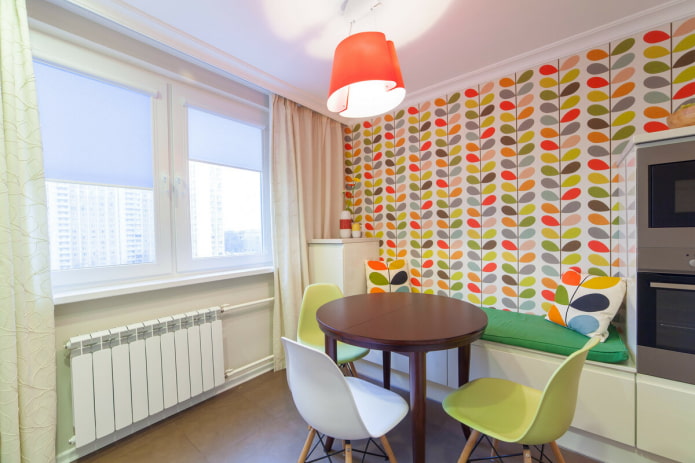
 10 practical tips for arranging a small kitchen in the country
10 practical tips for arranging a small kitchen in the country
 12 simple ideas for a small garden that will make it visually spacious
12 simple ideas for a small garden that will make it visually spacious
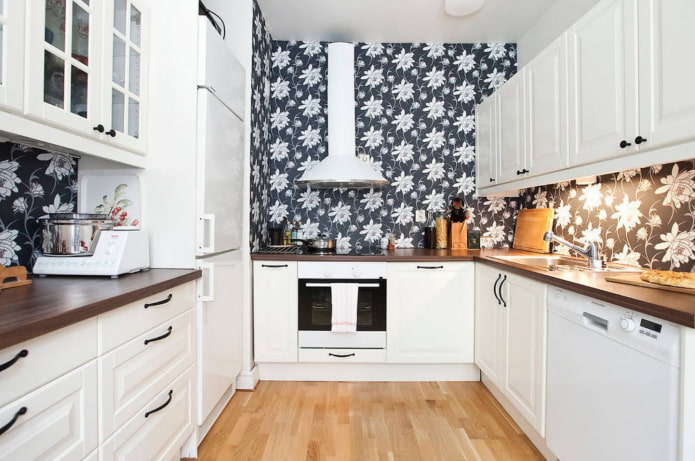
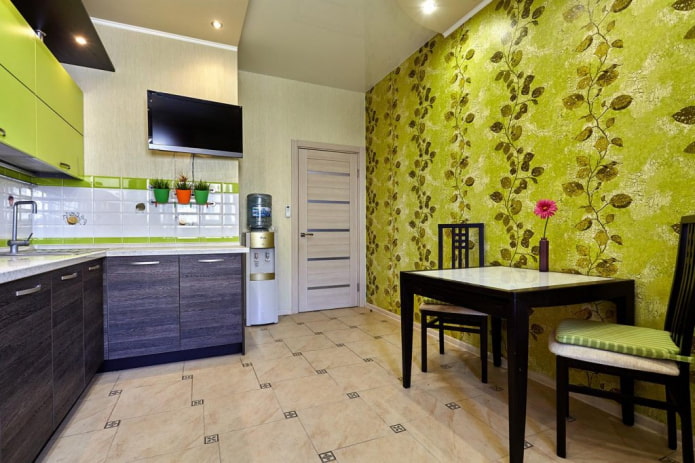
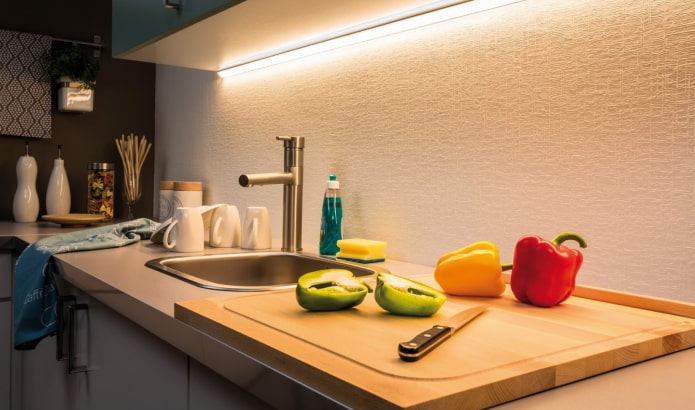
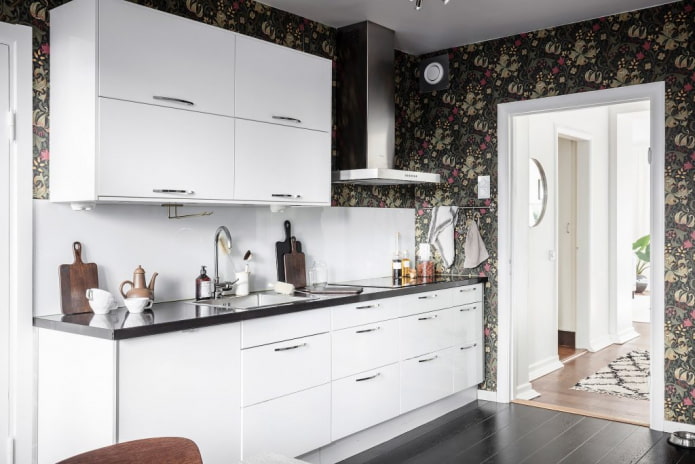
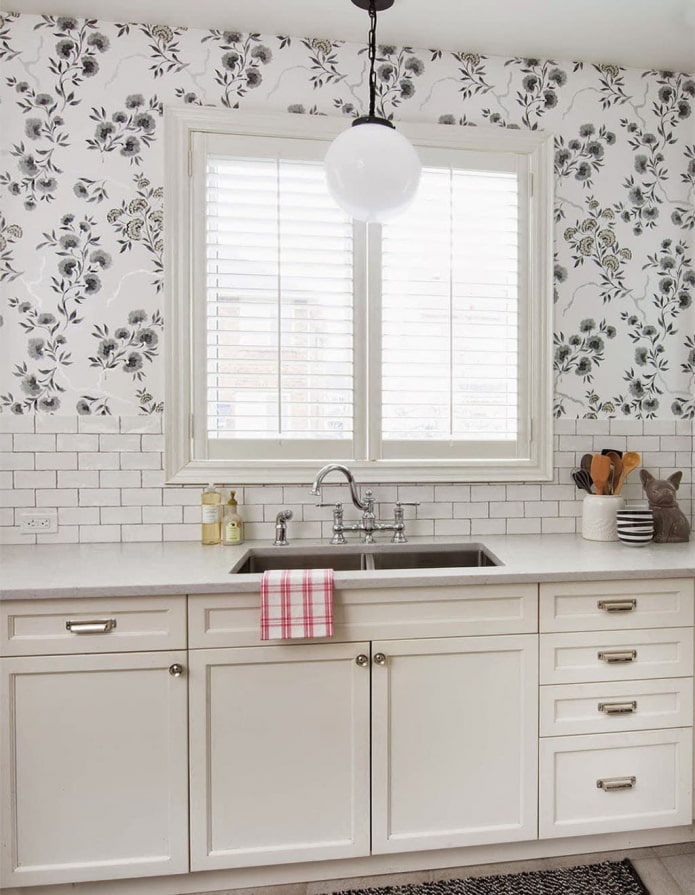
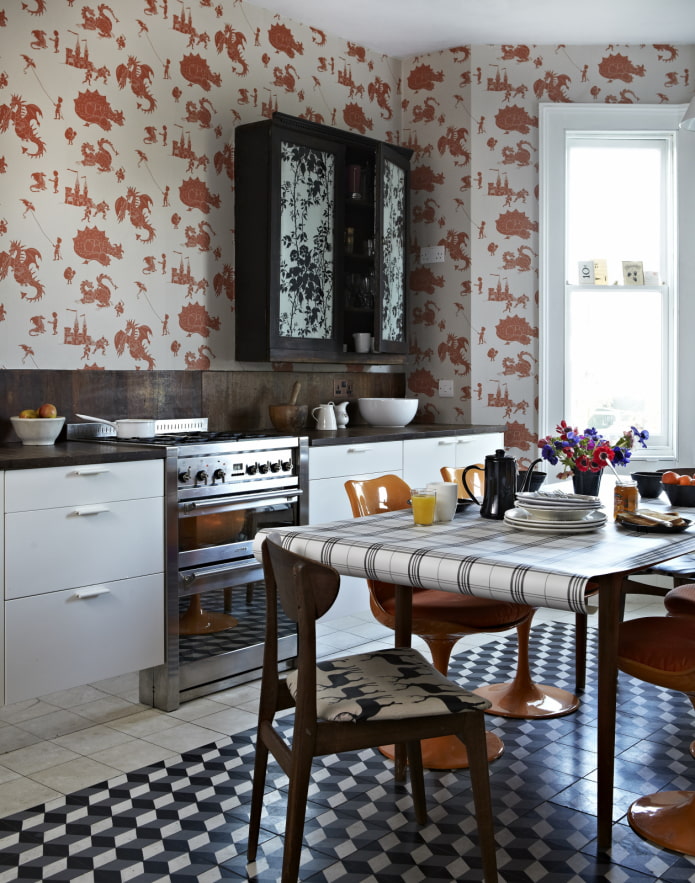
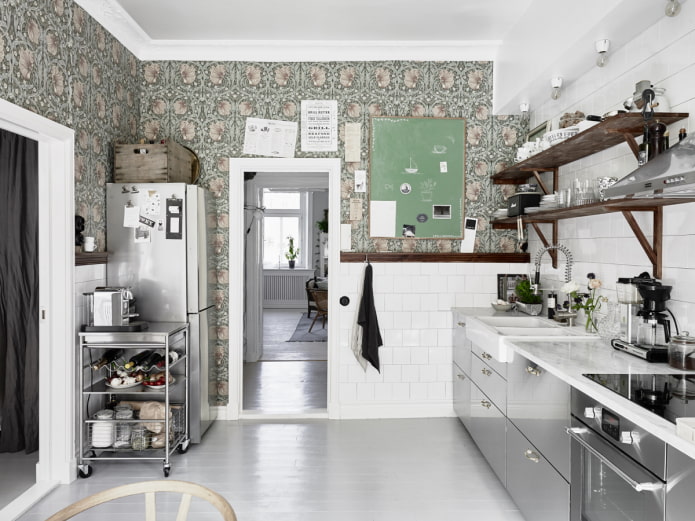

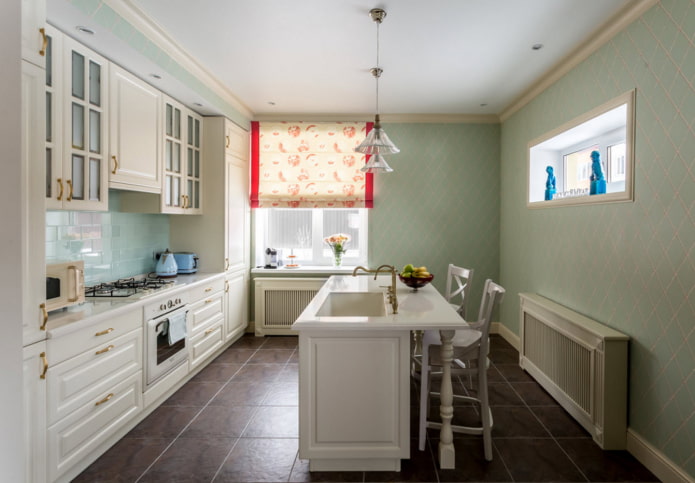
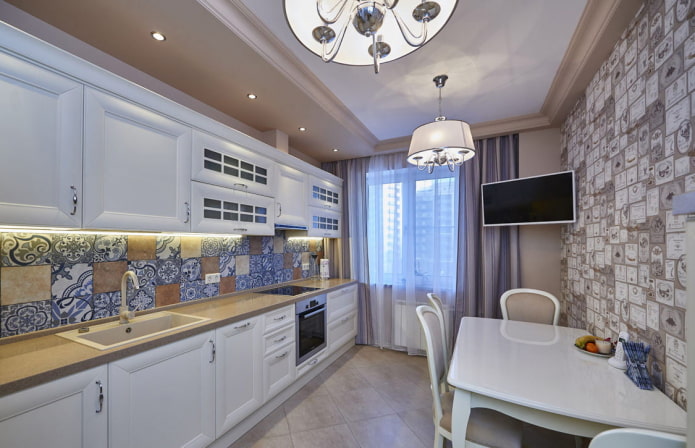
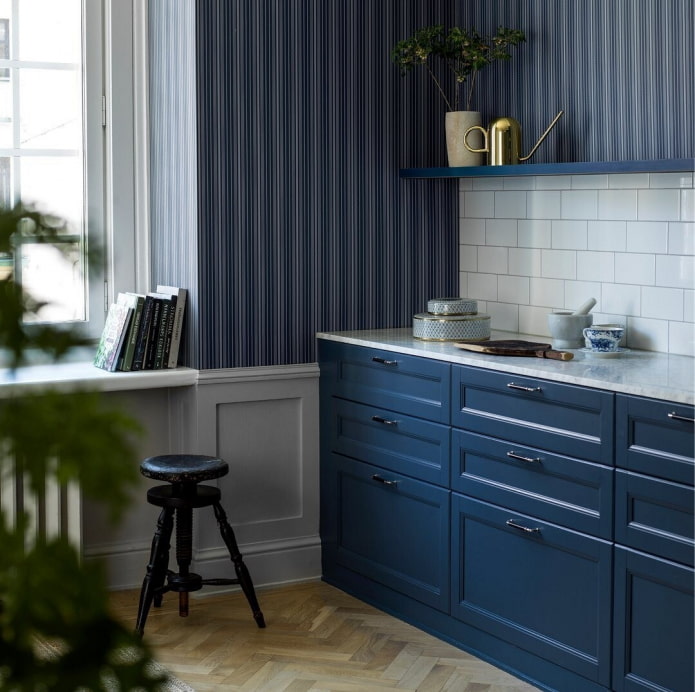
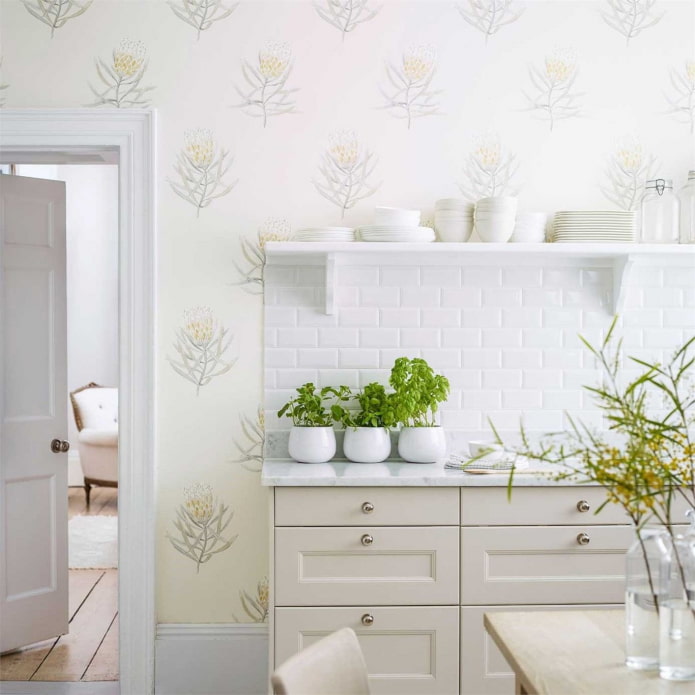
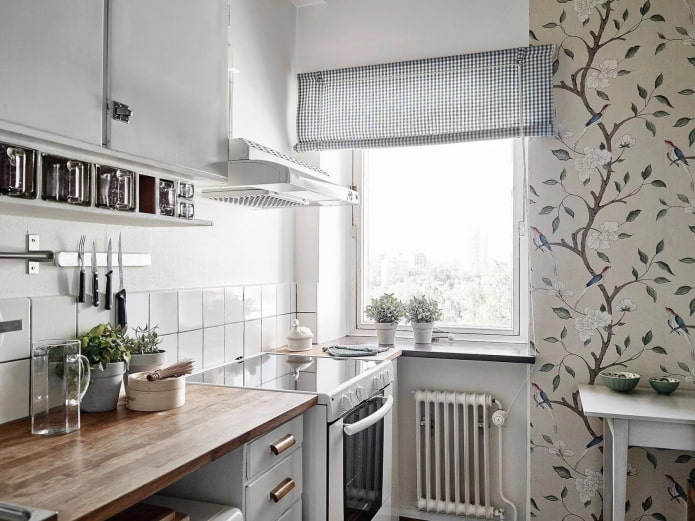
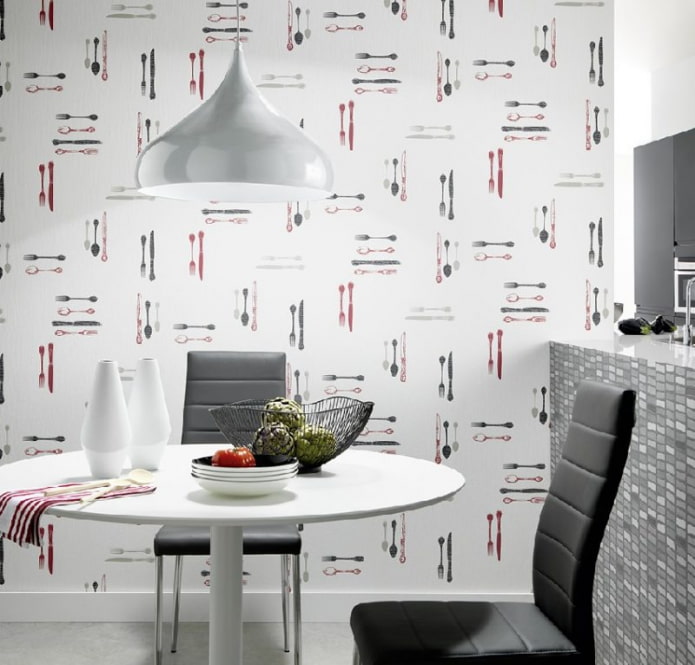
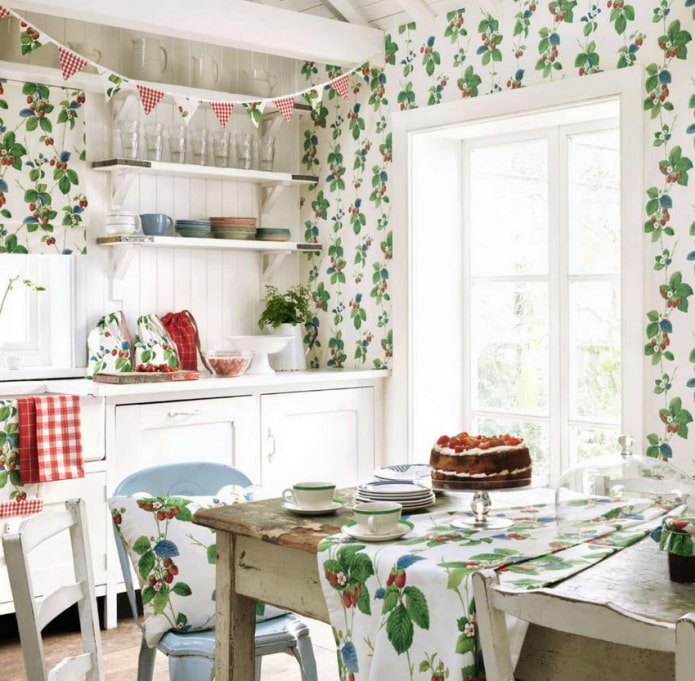
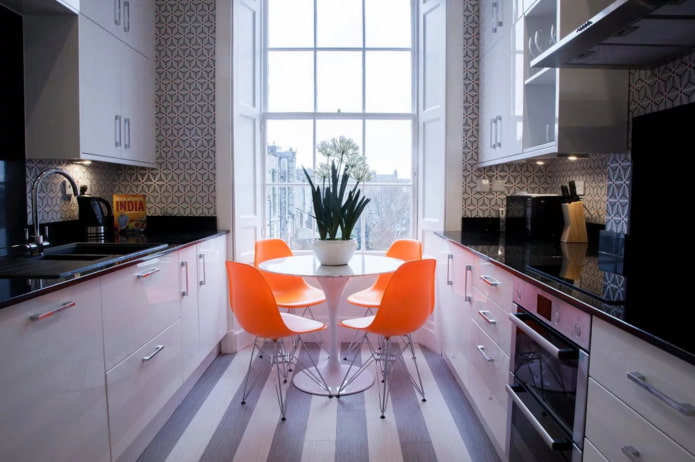
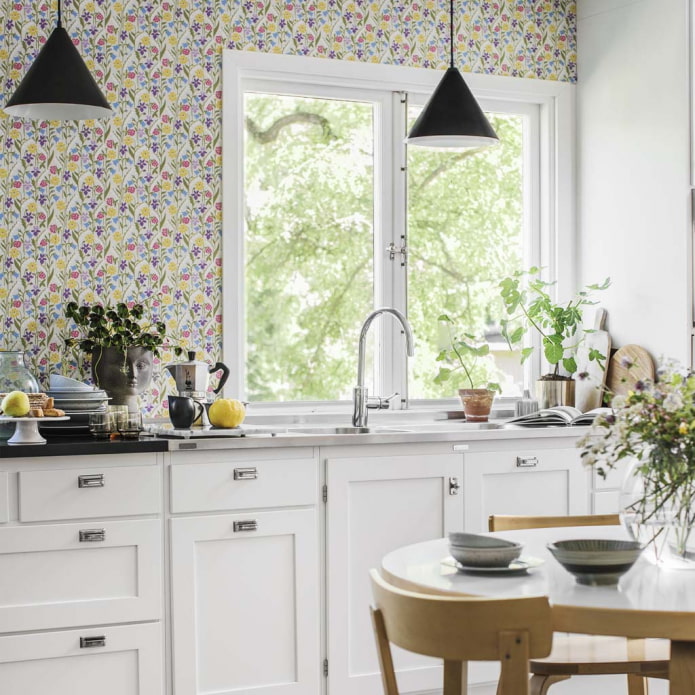
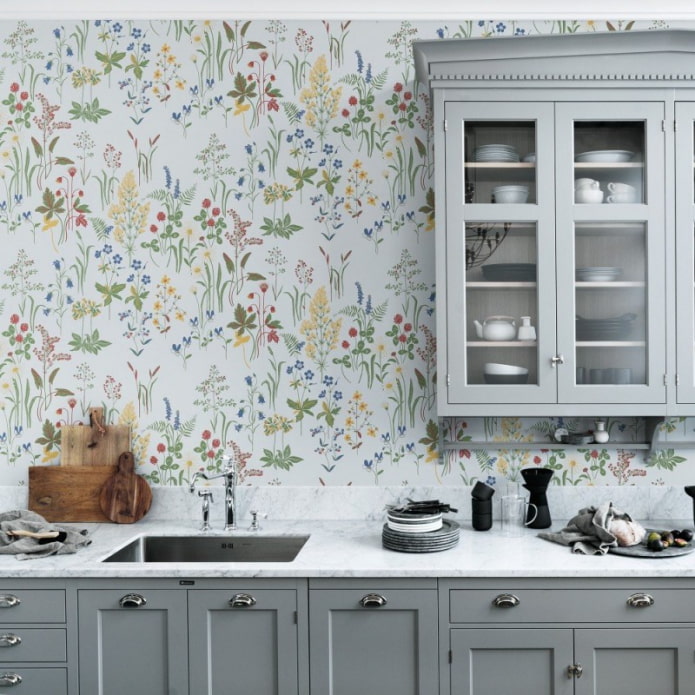

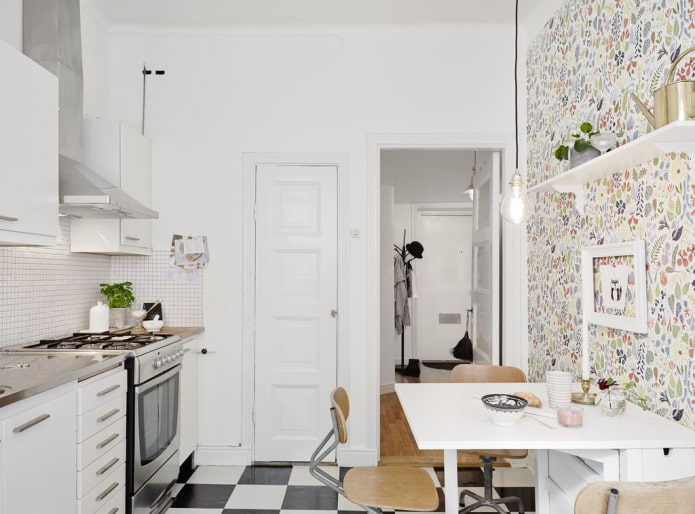
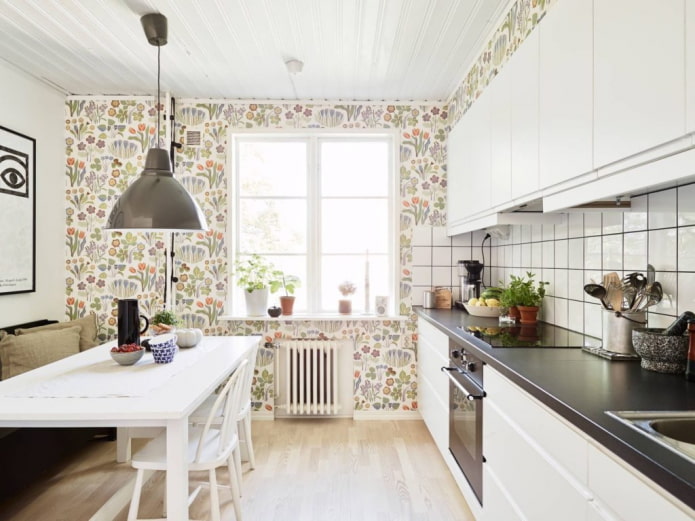
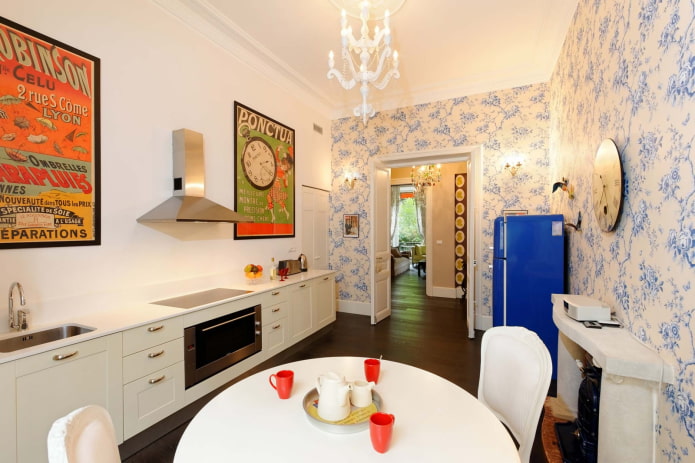

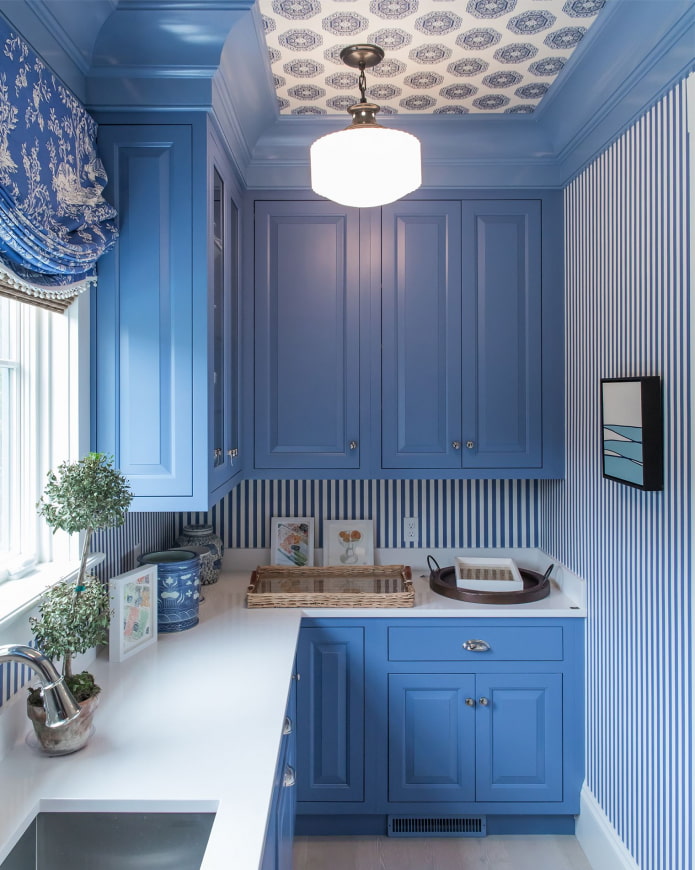
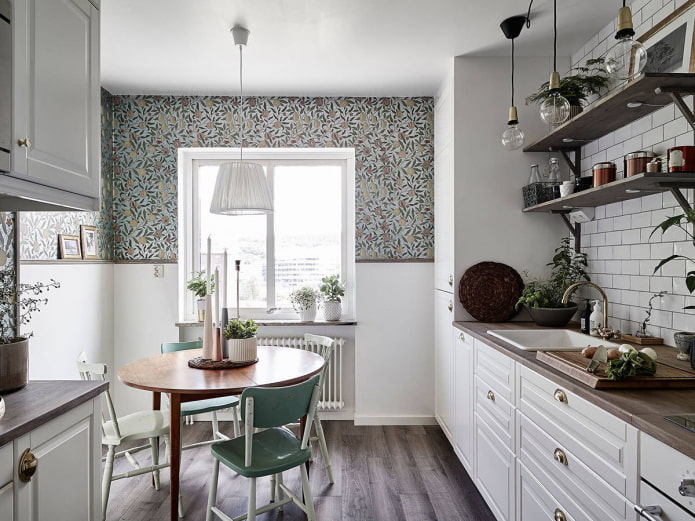
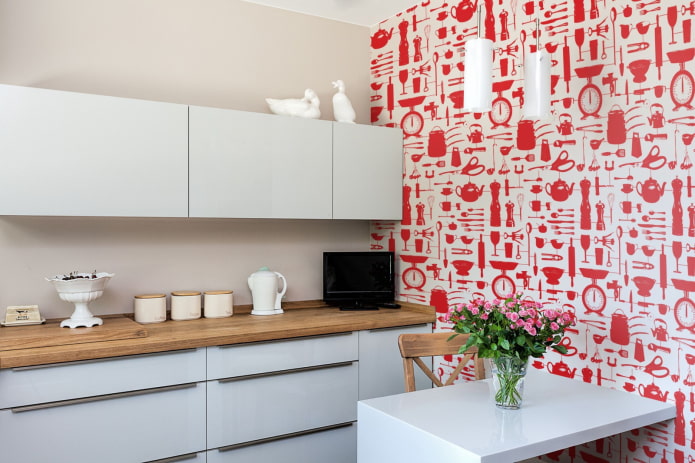


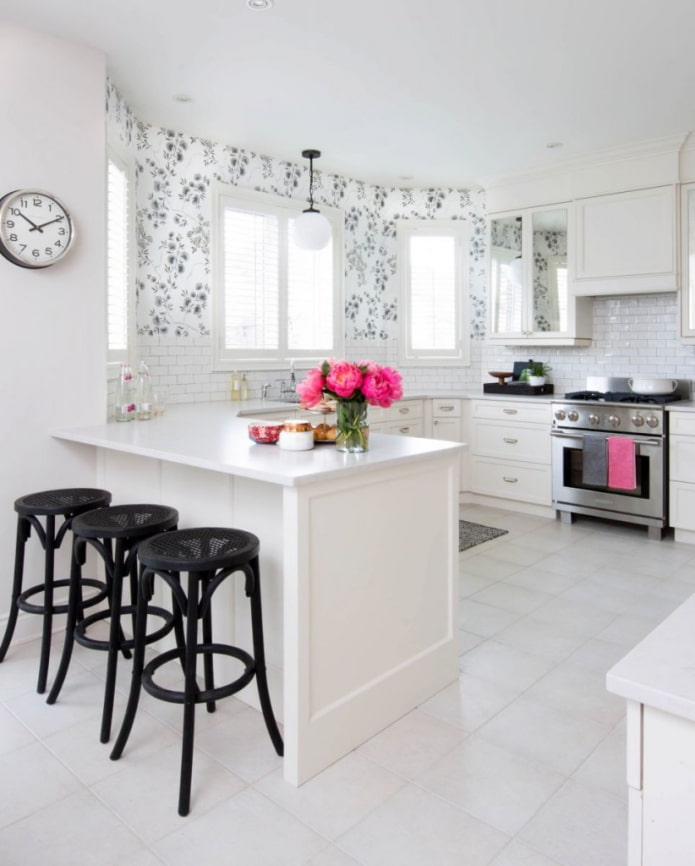
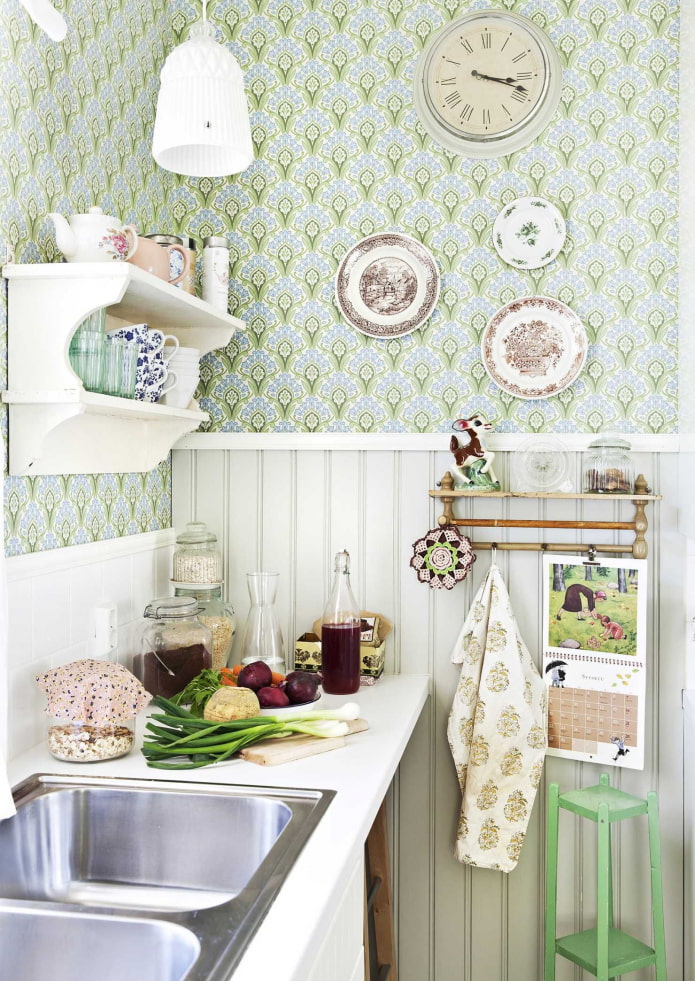
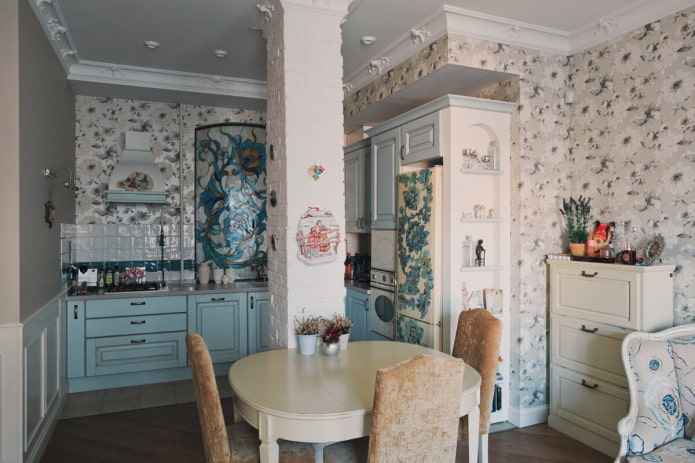
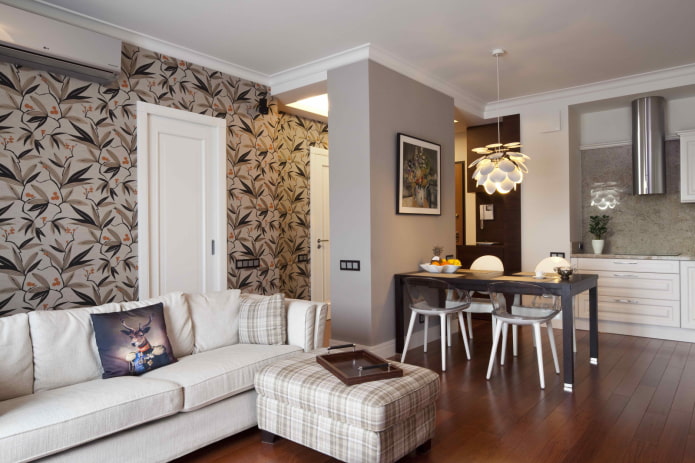
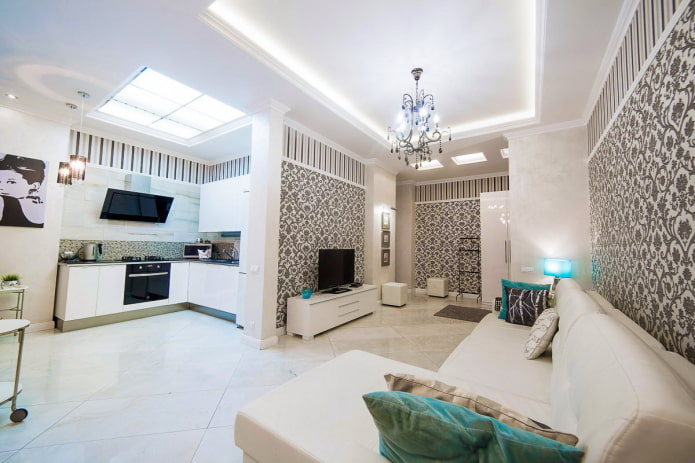
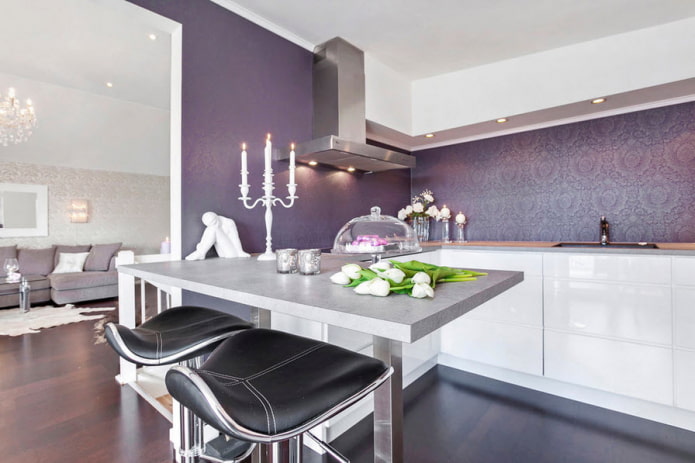
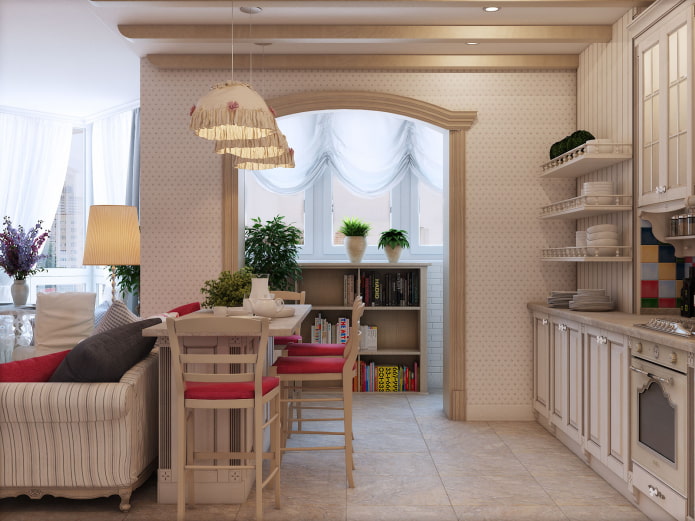

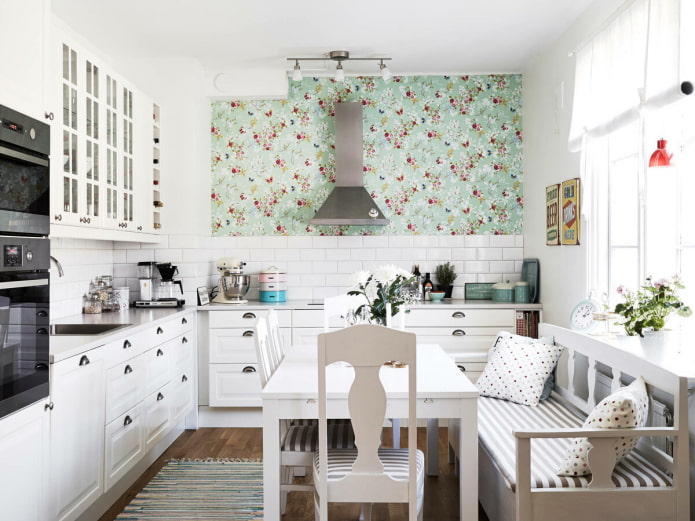

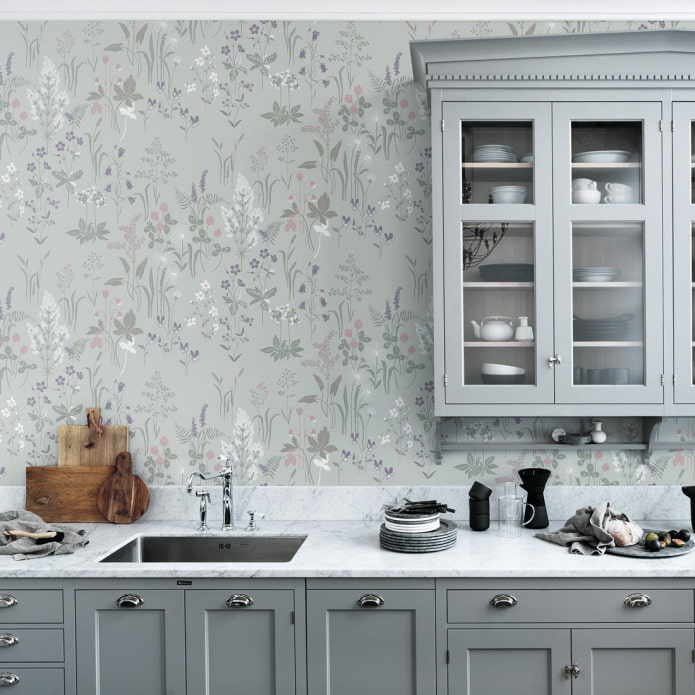
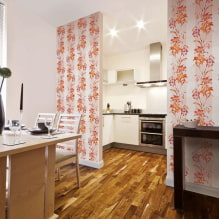
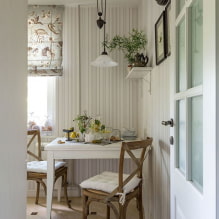
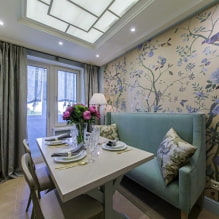
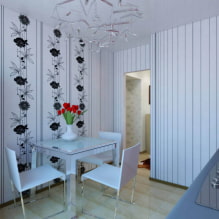
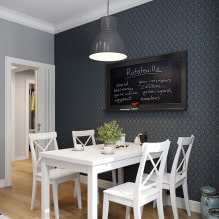
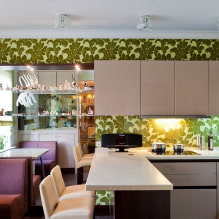
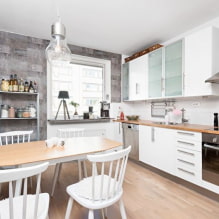
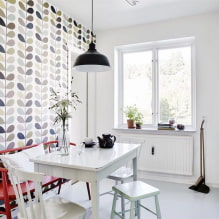
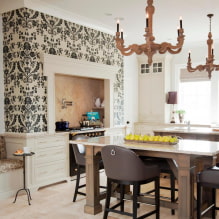
 How to choose the color of your kitchen sink?
How to choose the color of your kitchen sink? White kitchen set: features of choice, combination, 70 photos in the interior
White kitchen set: features of choice, combination, 70 photos in the interior Black set in the interior in the kitchen: design, choice of wallpaper, 90 photos
Black set in the interior in the kitchen: design, choice of wallpaper, 90 photos How to choose curtains for the kitchen and not regret it? - we understand all the nuances
How to choose curtains for the kitchen and not regret it? - we understand all the nuances Design of a white kitchen with a black countertop: 80 best ideas, photos in the interior
Design of a white kitchen with a black countertop: 80 best ideas, photos in the interior Kitchen design with green wallpaper: 55 modern photos in the interior
Kitchen design with green wallpaper: 55 modern photos in the interior